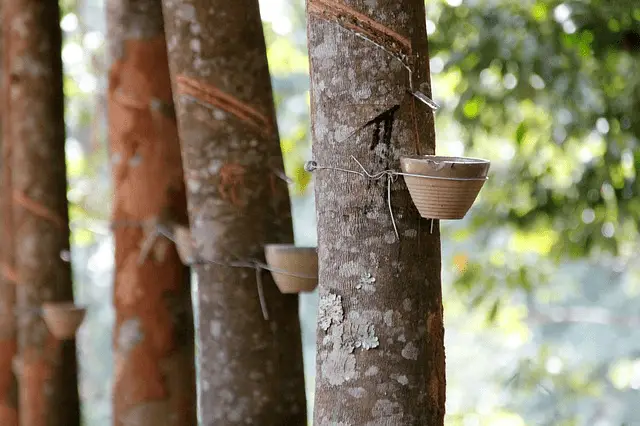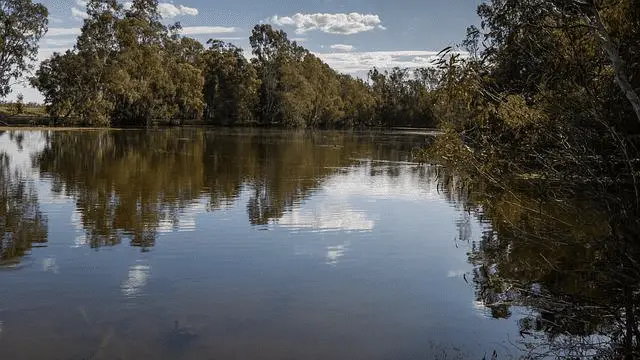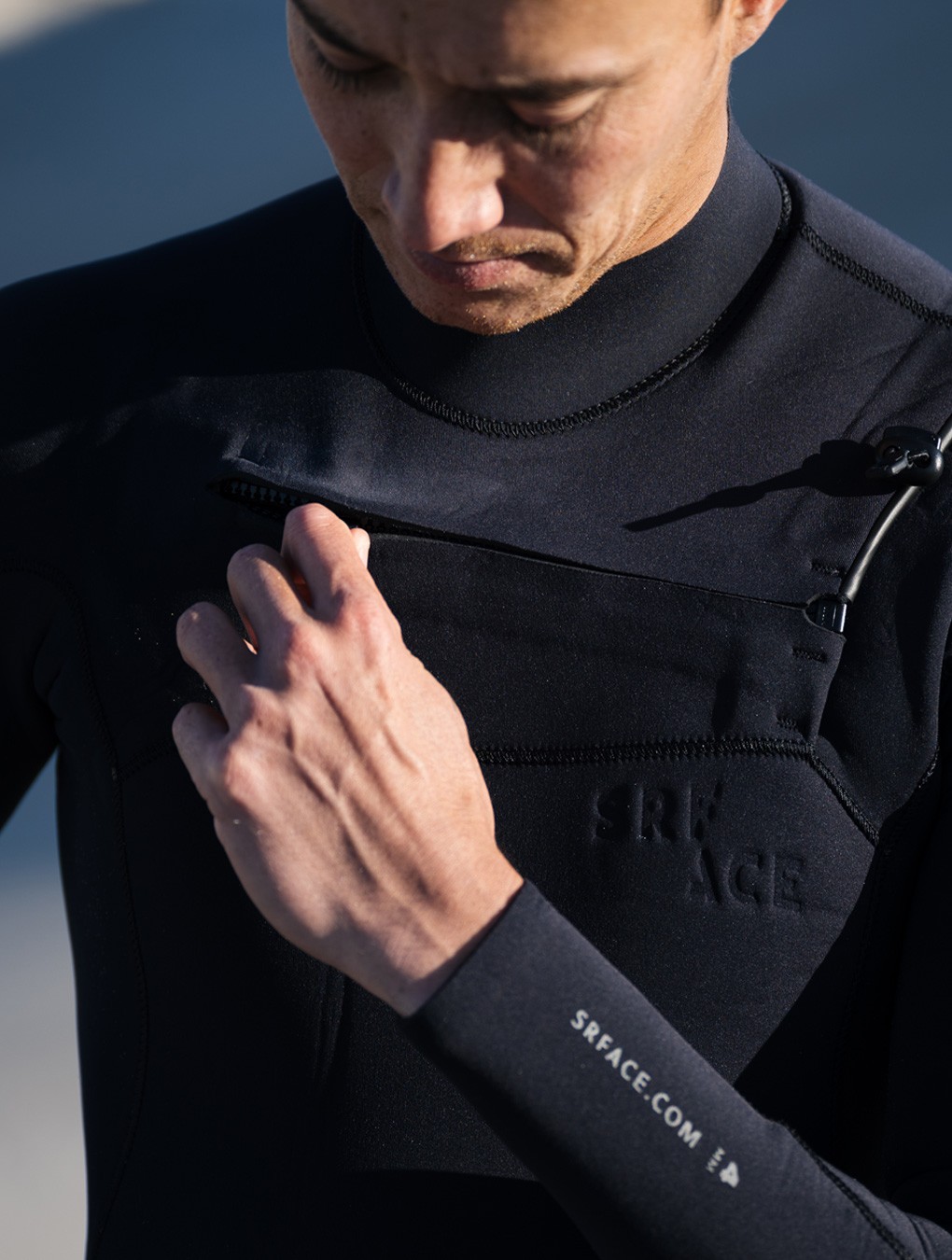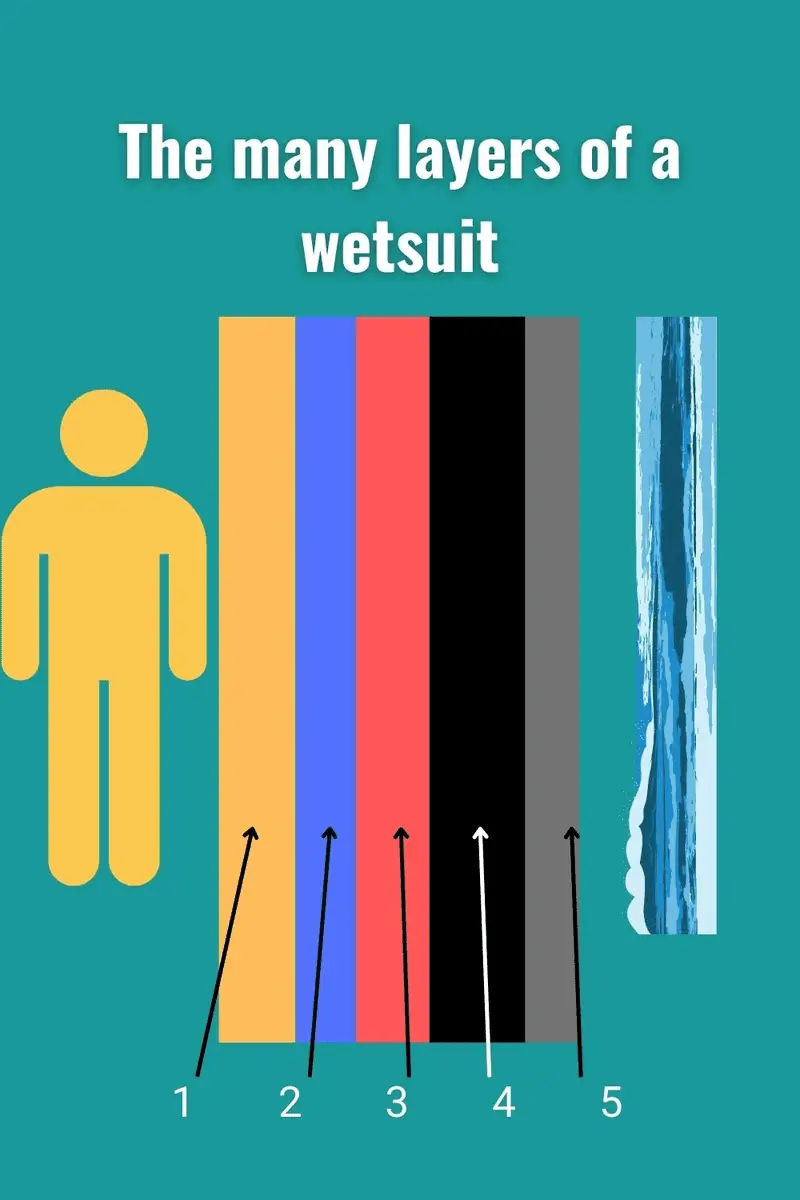As a kitesurfer and surfer, I love to play in the elements, which is also the reason why I started to go zero waste and start this blog. Strangely as a surfer, we use some unnatural devices to play with the elements. A surfboard is made from polyurethane and fiberglass, and a kite is made from crude oil-derived plastics, like nylons. But there are things we can do to make this sport more eco-friendly.
Since I get cold pretty easily, a wetsuit is needed for me to keep enjoying my favorite sport. But not all wetsuits are made the same way. So, in this blog post, I want to explain how a wetsuit works and which ones are as eco-friendly as a wetsuit can get. Let’s go.
What is an eco-friendly wetsuit?
An eco-friendly wetsuit is designed to have a small environmental impact in the creation process using sustainable materials, such as natural rubber and recycled materials. Additionally, it lasts a long time to extend the end of the life cycle.
What are the Materials used in conventional wetsuits?
Since the 1950’s wetsuits have been made from neoprene, a petroleum-derived material, developed by DuPont in the 1930s, this material is essentially a synthetic rubber. It uses chemicals that can harm the environment and yourself to create this non-renewable product.
Limestone neoprene was introduced as a better solution to the existing neoprene wetsuits, but it is not that much better. It is also a non-renewable material and is difficult to extract from the earth, damaging the environment.

What are the better alternatives to neoprene and limestone?
Patagonia has developed a way to make eco-friendly wetsuits using natural rubber. They were the first company to make all their wetsuit products from Yulex natural rubber. Even natural rubber comes with difficulties and has led to deforestation, and this is why Patagonia is only farming from forests that are FSC certified.
What really strikes a chord with me is that they decided to make their yulex technology open source, meaning accessible to everyone who wants to change from making neoprene wetsuits to neoprene-free wetsuits. I am glad Patagonia isn’t the only company making eco-friendly wetsuits on the market today.
There are a few companies that make their wetsuits from limestone and recycled car tires. This is definitely a step in the right direction, and I do not want to discard these alternatives to conventional neoprene wetsuits, hence why I have added them to this list.
Vissla is another big name in the game. They even use recycled plastic bottles turned into yarn to sow the wetsuits together. Since there is an abundance of plastic bottles, it is always a good idea to use them.
What are the most eco-friendly wetsuit brands?

Patagonia
for a medium-tall wetsuit at 3/4 mm created from yulex rubber, you pay $459
It comes in as number one, but they are also not the cheapest wetsuit you can get. If you want to be more eco-friendly but save some coins, perhaps one of the others below is more suitable.
I am a fan of Patagonia and its mission and boldness to try different things.
The fact that they were the first ones to create neoprene-free products says a lot, in my opinion. Scrolling through their review section, most people liked the product and gave it a 5-star rating. Patagonia immediately contacted one customer who complained about a hole in the suit and offered to return it for a refund or repair.
Used for surfing and kitesurfing, this is my go-to wetsuit.
Material:
Yulex Natural rubber
Recycled polyester and recycled spandex for a warm inside layer
Fair Trade certified

Billabong
I was happy to learn that Billabong is also making some of its products with more sustainable methods.
Billabong has also been using Yulex to make wetsuits a more sustainable practice. The 4/3 Furnace Natural Zipperless Full Wetsuit at medium size goes for $499.
This model comes with no zipper. I struggled to get in and out of them, but perhaps with the tips on how to put on a wetsuit below, you may find it easy in the future.
These eco wetsuits are well designed and have a CICLO®-Infused 100% recycled Superflex jersey on the outside.
Materials:
80% Natural Rubber, 10% recycled nylon, 10% recycled Polyester

Picture
Picture uses their so-called Eicoprene, a mix of limestone and recycled tires. This recycled polyester is then glued together with a water-based lamination called Aqua-A with no harmful chemicals. According to Picture, these wetsuits keep you nice and warm without sacrificing mobility. They trap the air between the engendered body lining for extra comfort in the cold water surfing.
They are also a B-Corp and make much more than just wetsuits.
Materials used:
Recycled Nylon
Recycled Polyester
Aqua-A glue
medium picture 3/4mm made from a blend of limestone and recycled tires, you pay $350
Vissla
Vissla has probably the most affordable wetsuit in the eco-friendly wetsuit lineup. They use Japanese limestone neoprene, which isn’t the best option when you are looking for eco-friendly wetsuits. Still, I figured they should be on this list since they are also part of the surfrider foundation, which helps to keep our oceans and beaches clean. Vissla has also been making boardshorts from discarded coconut husk and turning them into beautiful boardshorts, basically upcycling a waste product.
With the medium 3/4mm blend of limestone and tires, you pay $255 for a high-performance new wetsuit.
Materials used:
Japanese Limestone neoprene
recycled tires
Aqua-A (water-based glue)
Dope Dyed Yarn (the dying process that safes a lot of water)
Thermal Fever Fiber lining with more stretch insulates heat and dries fast

Srface
Srface has various wetsuits, including some made from Japanese limestone that runs a bit cheaper than the eco-friendly wetsuit made from yulex. They use recycled nylon glued and blind stitched for the lining, just like all the other wetsuits on this list.
They make a simple, no print and environmentally friendly wetsuit with a small carbon footprint compared to conventional wetsuit manufacturers.
Srface makes a wetsuit from yulex in medium 3/4mm for $305

The Sea
This is only for the ladies. Designed by women for women is the Sea. They make wetsuits from yulex, but all come in 2mm, costing around $200. Locally produced wetsuits and only small batch orders make this company a definite environmentally conscious runner.
The ladies love them in the reviews for their stretchiness and comfort. Plus, they come with nice designs on them.
How does a wetsuit work?
A wetsuit doesn’t keep you warm; your body heat gets trapped between you and the ocean and acts like a second skin. Even if some water comes in, with a good-fitting wetsuit, it gets trapped and warmed up by your own body.

Your
skin.- A thin layer of trapped water warmed by your body.
- A layer of nylon or other comfortable fabric stops the neoprene from rubbing and chafing your body. (Most surfers also wear a separate rash vest between their body and suit for the same reason—
to give an extra bit of insulation.)
A thin layer of heat-reflecting material is based on titanium, copper, silver, magnesium or aluminum metal oxide.
A thick layer of neoprene containing trapped bubbles of nitrogen. This is the most important part of keeping you warm.
A durable outer layer made from some water- and abrasion-resistant material.
Extend the life of any wetsuit!
Now, if you already have a neoprene wetsuit, there is no point in throwing it away and buying a new eco-friendly wetsuit. That would defeat the purpose of being eco-friendly. You want to extend its life as much as you can, and the best way is by
looking after it,
storing it right and
putting it correctly avoids poking holes into the material or tearing it.
To extend your wetsuit’s life, I always take them in the shower with me. I still wear them because I am so exhausted after my session that I can’t take them off anyway. With the help of a warm shower, I can now undress more easily and give the wetsuit its well-deserved rinse from saltwater.
Then I would hang it out to dry in a shady spot since further sunlight can shorten the lifespan.
Folding my wetsuit or hanging it for storage? I have my wetsuit hanging on a nice cushioned coathanger, so it doesn’t push too much into the shoulder of the wetsuit, leaving dints. I like to hang it, so the material gets to air out.
Only for transport when I am traveling somewhere, I would fold the arms in then the legs and use cardboard to protect it from any sharp objects that might come up in my luggage.
Tips and Tricks to put on your wetsuit
You can simply put a plastic bag over your feet to prevent holes or scratches when slipping into your wetsuit. This allows you to slide into each leg with much more ease.
Work the wetsuit material up your legs and over your hips, and make sure you have enough material. Moving it back down is always easy if you have too much.
Again use a plastic bag over your hand and slip it into your arms, which is pretty much it. If you get irritations on your neck, you can use a bit of vaseline to prevent rushes.
That’s it. I hope you enjoy the ocean, the waves or diving as much as you like with your eco-friendly wetsuit.
